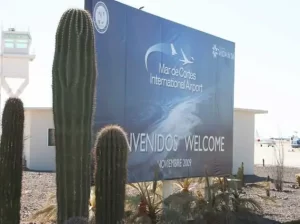
Driving Directions how to get to Rocky Point Mexico
How to get and Driving Directions to Rocky Point Mexico from US
If you’re planning a trip to this enchanting seaside town, having accurate Driving Directions to Rocky Point Mexico from the US will ensure a smooth and enjoyable journey.
Find How to Reach Rocky Point by Car, we will provide you with detailed driving directions to Rocky Point from various starting points, helping you navigate your way to this breathtaking destination.
Here are some tips when you travel by car and want to reach beautiful Puerto Peñasco, Sonora.
Starting from Phoenix, Arizona
To reach from Phoenix, follow these step-by-step driving directions:
- Head west on I-10 W from downtown Phoenix.
- Take exit 112 toward Gila Bend.
- Merge onto AZ-85 S.
- Continue on AZ-85 S until you reach the Mexican border.
- Once you cross the border, the road becomes Mexico Federal Highway 8.
- Continue on Mexico Federal Highway 8 until you reach Puerto Peñasco (Rocky Point).
Starting from Tucson, Arizona
If you’re starting your journey from Tucson, here’s how:
- Take I-19 S from downtown Tucson.
- Continue on I-19 S until you reach Nogales.
- At Nogales, take the exit toward the Mariposa Port of Entry.
- Cross the border into Mexico.
- Once you cross the border, you will be on Mexico Federal Highway 15.
- Stay on Mexico Federal Highway 15 until you reach the junction with Mexico Federal Highway 8.
- Take the exit onto Mexico Federal Highway 8 and continue until you reach Rocky Point.
Starting from San Diego, California
If you’re traveling from San Diego, follow these directions:
- Head east on I-8 E from downtown San Diego.
- Continue on I-8 E until you reach the border crossing at Calexico.
- After crossing the border, you will be on Mexico Federal Highway 2.
- Stay on Mexico Federal Highway 2 until you reach the junction with Mexico Federal Highway 8.
- Take the exit onto Mexico Federal Highway 8 and continue until you reach Rocky Point.
Starting from Los Angeles, California
To reach from Los Angeles, follow these driving directions:
- Take I-10 E from downtown Los Angeles.
- Continue on I-10 E until you reach Blythe, California.
- At Blythe, take the exit onto CA-78 E/US-95 S.
- Continue on US-95 S until you reach the border crossing at San Luis, Arizona.
- Cross the border into Mexico.
- After crossing the border, you will be on Mexico Federal Highway 2.
- Stay on Mexico Federal Highway 2 until you reach the junction with Mexico Federal Highway 8.
- Take the exit onto Mexico Federal Highway 8 and continue until you reach Rocky Point.
US Border Crossing Tips and Information
When crossing the border from the United States into Mexico on your way to Rocky Point, it’s essential to be well-prepared and informed. Here are some tips and information to ensure a smooth border crossing experience:
- Valid Documents: Make sure you have all the necessary travel documents. This includes a valid passport for each traveler, as well as any required visas or tourist permits. Ensure that your passport has at least six months of validity remaining.
- Vehicle Documentation: If you plan to drive your vehicle into Mexico, you will need to obtain a temporary vehicle importation permit. This can be done in advance online or at the border crossing. You will also need your vehicle registration and proof of insurance.
- Know the Hours: Be aware of the operating hours of the border crossing you plan to use. Some crossings have limited hours, so it’s important to plan your trip accordingly to avoid any delays.
- Check for Travel Advisories: Before your trip, check the latest travel advisories and safety information from your government. Stay informed about any potential issues or road conditions that may affect your journey.
- Declare Items: When crossing the border, be prepared to declare any items of value that you are bringing into Mexico. This includes electronics, jewelry, or any other high-value items. Failing to declare items can result in fines or confiscation.
- Cash and Currency: It’s advisable to carry some Mexican pesos for tolls, small purchases, or emergencies. However, major credit cards are widely accepted in most places. Inform your bank or credit card company about your travel plans to avoid any issues with your cards.
- Follow Customs Regulations: Familiarize yourself with the customs regulations of both the United States and Mexico. Understand what items are restricted or prohibited from being brought across the border. This includes certain foods, plants, and medications.
- Stay in the Designated Lanes: Follow the signs and stay in the designated lanes for tourists and vehicles. Avoid using the commercial or fast lanes, as they are meant for specific purposes and may cause unnecessary delays.
- Be Patient and Polite: Border crossings can sometimes be busy and time-consuming. Maintain a patient and polite attitude when interacting with border officials. Cooperation and respectful behavior will help expedite the process.
- Keep Important Documents Handy: Have your travel documents, vehicle paperwork, and identification readily accessible when approaching the border checkpoint. This will help streamline the inspection process and save time.
Remember, border crossings can vary in terms of traffic and wait times. It’s recommended to check for real-time updates or use smartphone applications that provide information on border wait times to plan your journey more efficiently.
By following these Driving Directions to Rocky Point Mexico from US and border crossing tips and information, you can ensure a hassle-free experience as you make your way to Puerto Peñasco.
Navigating the Mexican Highways
Once you have crossed the border into Mexico and are on your way to Rocky Point, it’s important to familiarize yourself with the Mexican highway system. Here are some essential tips for navigating the Mexican highways:
- Mexican Highway Numbering: Mexican highways are numbered with the prefix “MX” followed by a number. For example, Mexico Federal Highway 8 is denoted as “MX-8.” Pay attention to the highway signs and use a reliable GPS or navigation app to stay on the correct route.
- Toll Roads: Mexico has an extensive network of toll roads, known as “cuotas.” These roads offer smoother and faster travel but come with a toll fee. Carry enough cash or a credit card to pay the tolls along your route.
- Road Conditions: While major highways are generally well-maintained, be prepared for occasional potholes or uneven surfaces, especially on secondary roads. Exercise caution, especially
You may like this:


